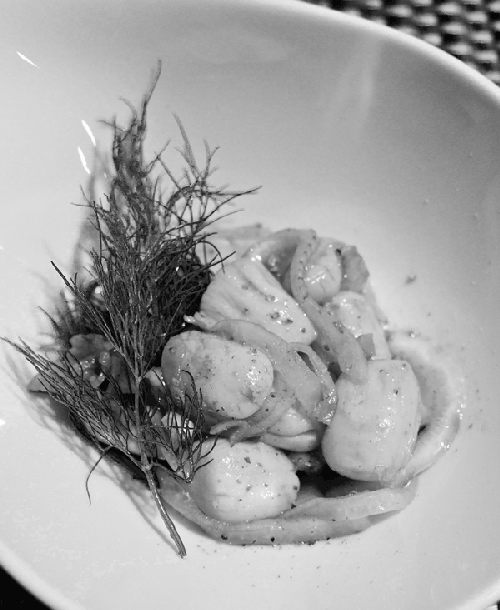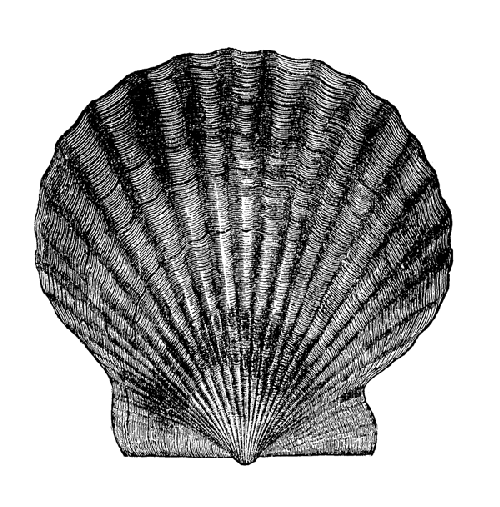3. Acids and Bases
When it comes to cooking with acids, ingredients such as lime juice can be used to
essentially “cook” the proteins in items like shrimp and fish, resulting in similar
changes to those that happen when applying heat. On the molecular level, a protein in its
native state is structured so as to balance the various attracting and repulsing charges
between both its internal regions and the surrounding environment. Portions of proteins
are nonpolar—flip ahead a few pages to the section on “When a Molecule Meets a Molecule”
to read about polarity—while water is polar. Because of this, proteins normally contort
and fold themselves up so that the polar regions of their structures are arranged in a
stable shape. Adding an acid or base denatures a protein by knocking its charges out of
balance. The ions from an acid or base are able to slip into the protein’s structure and
change the electrical charges, causing the protein to change its shape. For dishes like
ceviche (citrus-marinated seafood), the acid from the lime or lemon juice literally causes
a change on the molecular level akin to cooking. And this change doesn’t just happen on
the surface—given sufficient time, acidic and basic solutions will fully penetrate a
food.
When it comes to food safety, adjusting the pH level of the environment can both
destroy any existing bacteria or parasites and also prohibit their growth. Ceviche is a
classic example of this. Vibrio cholerae—a common seafood-borne
pathogen—rapidly dies in environments with a pH level below 4.5, even at room temperature.
With sufficient lime juice, V. cholerae will not survive. Or consider
cooked white rice. Left out at room temperature, it becomes a perfect breeding ground for
Bacillus cereus: it’s moist, at an ideal temperature, and has
plenty of nutrients for bacteria to munch away on. But drop the pH level of the rice by adding enough
rice vinegar—down to about 4.0—and the rice falls well outside a hospitable range for
bacteria to grow. This is why proper preparation of sushi rice is so critical in
restaurants: failure to correctly adjust the pH level can result in sickening
diners.
Note:
Spores for B. cereus are highly prevalent in soil and water;
they’re essentially impossible to get rid of. They’re heat-stable, too—you can’t boil
them away. Whoever joked about cockroaches being the only thing to survive a nuclear
blast clearly hadn’t read up on these things.
This
scallop ceviche is a simple dish to prepare, and surprisingly refreshing on a warm
summer day. It’s also a good example of how acids—in this case, the lime and lemon
juices—can be used in cooking.

In a bowl, mix:
½ cup (130g) lime juice
¼ cup (60g) lemon juice
1 small (70g) red onion, sliced as thinly as
possible
2 tablespoons (20g or 1 bulb) shallot, thinly
sliced
2 tablespoons (18g) olive oil
1 tablespoon (15g) ketchup
1 clove (7g) garlic, chopped or run through a garlic
press
1 teaspoon (4g) balsamic vinegar
Add and toss to coat:
1 lb (500g) bay scallops, rinsed and patted
dry
Store in fridge, toss again after two hours, and store overnight to give sufficient
time for acid to penetrate scallops. Add salt and pepper to taste.

Notes
Try slicing one of the scallops in half after two hours. You should
see a white outer ring and a translucent center. The outer ring is the portion
that has had time to react with the citric acid, changing color as the proteins
denature (just as they would with heat applied). Likewise, after marinating for a
day or two, a sliced scallop should show a cross-section that’s entirely
white.
Keep in mind that the pH of the marinade is important! At least 15% of
the dish should be lime or lemon juice, assuming the remaining ingredients are not
extremely basic. Lime juice is more acidic than lemon juice (pH of 2.0–2.35 versus
2.0–2.6).
Try adding minor quantities of herbs like oregano to the marinade or
adding cherry tomatoes and cilantro to the final dish (after
marinating).
Note:
What, you’re worried that the scallops are still “raw” and full of bacteria? To
quote from the literature: “In the face of an epidemic of cholera, consumption of
ceviche prepared with lime juice would be one of the safest ways to avoid infection
with [Vibrio] cholerae.” (L. Mata, M. Vives, and G. Vicente (1994), “Extinction of
Vibrio cholerae in acidic substrata: contaminated fish marinated with lime juice
(ceviche),” Revista de Biologiá Tropical 42(3): 472–485.)
Still, since some types of bacteria can withstand more extreme environments, if
you really want to play it safe, avoid serving this to anyone in an at-risk
group.